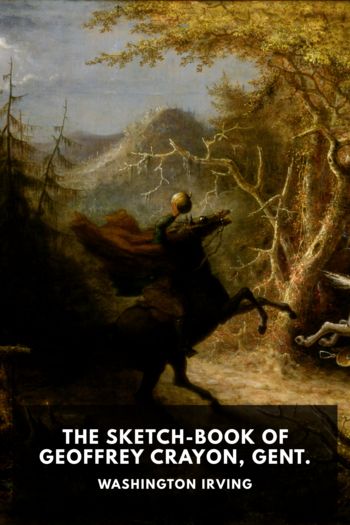Loverly:The Life and Times of My Fair Lady (Broadway Legacies), McHugh, Dominic [fantasy books to read TXT] 📗

Book online «Loverly:The Life and Times of My Fair Lady (Broadway Legacies), McHugh, Dominic [fantasy books to read TXT] 📗». Author McHugh, Dominic
The outline of act 2 continues the overall trend toward overt discussions of love. We see, for instance, the crucial inclusion of a duet for Higgins and Eliza—something missing from the final show, and yet something that would have united them in music in a classic gesture of romance. Pickering’s character is strikingly at odds with his Fair Lady persona: he is “amused” at Higgins’s behavior, intimating that the motivation for the Professor’s irritability is romantic jealousy. He reprises his first-act song and “facetiously suggests to Higgins that he try it again with another flower girl—create another woman precisely to his own taste,” whereupon Higgins “stomps off” and Pickering “laughs.” This outline also reveals initial plans for the ball scene: whereas the definitive show ends the first act in the middle of the dance and tantalizes us with Eliza’s fate until “You Did It” at the start of act 2, Outline 2 shows the events in real time. “You Did It,” of course, is a great showcase for Higgins and Pickering in which they relate the evening’s events to Mrs. Pearce and the servants, but Outline 2 has all this happen onstage instead, and even includes reference to Liszt’s Hungarian Rhapsody in the same ironic way that Loewe would eventually evoke it in “You Did It.” The third scene of act 2 is also unfamiliar, in the sense that it depicts the trio in a “period limousine” with Pickering driving, but Higgins self-satisfied behavior is familiar from both Pygmalion and the published Fair Lady.
Outline 3: Scenic Outline (ca.1954)
Outline 3 (reproduced in table 3.4) also comes from Herman Levin’s papers. It gives less specific information about the action, has no mention of songs, no title or date, and takes up only three pages. However, the outline does show a mixture of some scenes held over from the previous outline and some advanced to the familiar scenario, implying it must be an intermediate version. Act 1, scene 9 contains a note: “I am hoping that by the time we come to England, we will have a choreographer, and this sequence might be a little more precise than it is at the moment.” This strongly implies that the document dates from either the end of 1954 or early 1955, because it is likely to be an explanation to Rex Harrison—whom Lerner and Loewe visited in London—of how the scene might play. Therefore, Lerner’s subsequent claim that he and Loewe recommenced the composition of Fair Lady in autumn 1954 because they had decided they “could do Pygmalion simply by doing Pygmalion” (i.e., following the progress of the film “and adding the action that took place between the acts of the play”), in fact he simplified the matter.38 Clearly, more work was done on the story than Lerner would have us believe.
Table 3.3.Outline 2, Act 2
Although the first scene in Outline 3 has been moved back to Covent Garden from Limehouse and several of the other scenes are in a familiar form, scene 6 still has a telephone call between Higgins and his mother that does not appear in the published show or in Pygmalion. Scene 8 has a Policeman who was eventually not included, and scene 9 still contains a scene in which Higgins persuades Eliza to continue with the experiment, followed by the ballet which stayed in the show until New Haven. Act 2, scene 4 is “undetermined”; apparently, Lerner had not yet finalized the scene where Higgins and Pickering discover Eliza’s disappearance and resolve to track her down. This part of the story is not shown in the Pygmalion play or film and is a key example of Lerner “filling in the action” between the play’s acts. The next scene is also interesting in that it appears to preserve the action of Pygmalion by including Doolittle, who departs from the show after the return to Covent Garden in the published version, and Pickering, whose final appearance in Fair Lady is in scene 4. The Colonel also appears in the ensuing scene, along with some “Street Folk”; the purpose of this tableau is unclear, however, though the final scene is in its familiar form. In summary, Outline 3 moves us much closer to the definitive structure of the musical, but several scenes were still in a different form. Of particular relevance is the scene of Higgins’s near-“seduction” of Eliza in act 1, when he persuades her to continue with the experiment: this shows that Lerner was continuing to overplay the Higgins-Eliza relationship, even though as a whole his plan moves back toward Pygmalion as a model.
Outline 4
Finally, Outline 4 (table 3.5) comes from the papers (housed in the New York Public Library) of the show’s choreographer, Hanya Holm. It undoubtedly postdates her agreement to create the dances for the show because it includes a reference to “Miss Holm.” This places it somewhere between late September 1955 and the rehearsal period in January 1956, probably nearer the former than the latter. By this stage the structure of the show was much more strongly in place. Reflecting this, Outline 4 is





Comments (0)